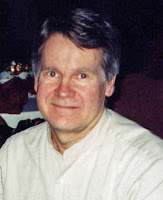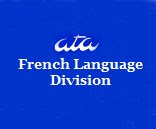Most translators, including those who do not seek it out, are eventually asked to translate a legal document. Occasional and seasoned legal translators alike seek reliable dictionaries, glossaries, and well-organized reference documents and websites to help them achieve utmost accuracy and clarity in their translations. Therefore, it should come as no surprise that this presentation was eagerly awaited at the annual conference, as was evident from the number of people in attendance.
An affable and clear communicator, Cynthia L. Hazelton, JD, drew on her teaching experience and a background in law to guide us through the basic issues in legal translation, give us an overview of the types of resources used to research legal terminology, and illustrate the main points of the presentation through examples.
A legal translator has to ask some of the same questions as a translator in any other field: What is the purpose of the text? Who is its intended audience? What register should be used? However, the legal translator is further challenged by the convoluted style of legal writing, the use of common words having entirely different meanings in legal contexts, and a vocabulary otherwise absent from regular discourse. As if that were not enough, the legal translator must probe further to identify the legal system that serves as the framework of the document and recognize any additional differences in legal concepts and terminology that might exist between the country in which the document originated and the country where the translation will be used.
After a discussion of the broad differences between civil law, common law, combined civil and common law, and the various religious law systems that exist, Hazelton showed a map that illustrated that it is crucial for a French-English translator to be knowledgeable about the different systems of law: all four systems exist in the French-speaking world.
Hazelton identified three categories of resources available to the legal translator. Primary resources are the original legislative codes, laws, treaties, court decision, and trial transcripts. Secondary sources interpret, evaluate, and comment on the primary documents and can take the form of articles in scholarly journals, criticism or commentary, magazine or newspaper articles. Many international organizations, such as the United Nations, the North Atlantic Treaty Organization, the World Trade Organization, and the World Health Organization, to name a few, publish works that fall in this category, and frequently these publications are in English and French. Finally, tertiary sources, which include encyclopedias, dictionaries, glossaries, and textbooks, distill information from primary and secondary sources. While these are undeniably useful resources, translators must not become “stuck” working solely with tertiary resources, and should be prepared to dig through secondary and primary resources when searching for the right term.
Finally, Hazelton reminded us to never underestimate the value of an expert’s opinion. As we build our own lists of favorite resources, develop our personal glossaries, and nurture our professional networks, it would behoove every dedicated legal translator to build contacts with experts in the fields of legal translation and law, colleagues that could be called on in a pinch to demystify a tortuous sentence or resolve a terminology conundrum.
An affable and clear communicator, Cynthia L. Hazelton, JD, drew on her teaching experience and a background in law to guide us through the basic issues in legal translation, give us an overview of the types of resources used to research legal terminology, and illustrate the main points of the presentation through examples.
A legal translator has to ask some of the same questions as a translator in any other field: What is the purpose of the text? Who is its intended audience? What register should be used? However, the legal translator is further challenged by the convoluted style of legal writing, the use of common words having entirely different meanings in legal contexts, and a vocabulary otherwise absent from regular discourse. As if that were not enough, the legal translator must probe further to identify the legal system that serves as the framework of the document and recognize any additional differences in legal concepts and terminology that might exist between the country in which the document originated and the country where the translation will be used.
After a discussion of the broad differences between civil law, common law, combined civil and common law, and the various religious law systems that exist, Hazelton showed a map that illustrated that it is crucial for a French-English translator to be knowledgeable about the different systems of law: all four systems exist in the French-speaking world.
Hazelton identified three categories of resources available to the legal translator. Primary resources are the original legislative codes, laws, treaties, court decision, and trial transcripts. Secondary sources interpret, evaluate, and comment on the primary documents and can take the form of articles in scholarly journals, criticism or commentary, magazine or newspaper articles. Many international organizations, such as the United Nations, the North Atlantic Treaty Organization, the World Trade Organization, and the World Health Organization, to name a few, publish works that fall in this category, and frequently these publications are in English and French. Finally, tertiary sources, which include encyclopedias, dictionaries, glossaries, and textbooks, distill information from primary and secondary sources. While these are undeniably useful resources, translators must not become “stuck” working solely with tertiary resources, and should be prepared to dig through secondary and primary resources when searching for the right term.
Finally, Hazelton reminded us to never underestimate the value of an expert’s opinion. As we build our own lists of favorite resources, develop our personal glossaries, and nurture our professional networks, it would behoove every dedicated legal translator to build contacts with experts in the fields of legal translation and law, colleagues that could be called on in a pinch to demystify a tortuous sentence or resolve a terminology conundrum.
Resources
Suggested Reading
Canadian Bar Association – Ontario Ontario Ottawa
David, R. and De Vries, H. 1958. The French Legal System: An Introduction to Civil Law Systems. Oceana Publications.†
Kempin, F. 1990. Historical Introduction to Anglo-American Law in a Nutshell. West Group Publishing.
Merryman, J. and Perez-Perdomo, R. 2007. The Civil Law Tradition: An Introduction to the Legal Systems of Europe and Latin America. Stanford University Press.
Weston, M. 1991. An English Reader’s Guide to the French Legal System. Berg Publishers.
Monolingual Legal Resources (Print)
Garner, B. ed., Black’s Law Dictionary†† (English)
Cohen, M. 2007. Legal Research in a Nutshell. Thomson West.
Bilingual Legal Resources (Print)
Robert & Collins Super Senior French to English and English to French Dictionary. 2 Volumes. ††
Monolingual Legal Resources (Online)
Avocat On-line *** (French)
Duhaime’s Legal Dictionary *** (English)
French Ministry of Justice: Les Mots Clés de la Justice *** (French)
Tjaden, T. 2008. Doing Legal Research in Canada - Introduction: The Canadian Legal System http://www.llrx.com/features/ca_intro.htm ** (English)
United States Code * (English)
Bilingual or Multilingual Legal Resources (Online)
Greffe du Tribunal de Commerce de Paris, French-English Dictionary for Use at the Greffe du Tribunal de Commerce de Paris (PDF format) ***
Juriterm **
NATO Glossary of Abbreviations Used in NATO Documents and Publications (PDF format) ***
General Online Resources ***
United Nations Multilingual Terminology Database
* Primary sources
** Secondary sources
*** Tertiary sources
† Out of print/limited availability, check your library and second hand stores
†† Indispensable, according to the presenter.
Disclaimer:
Hyperlinks to Amazon.com listings are provided for information only and is not an endorsement of this bookseller over any other.





